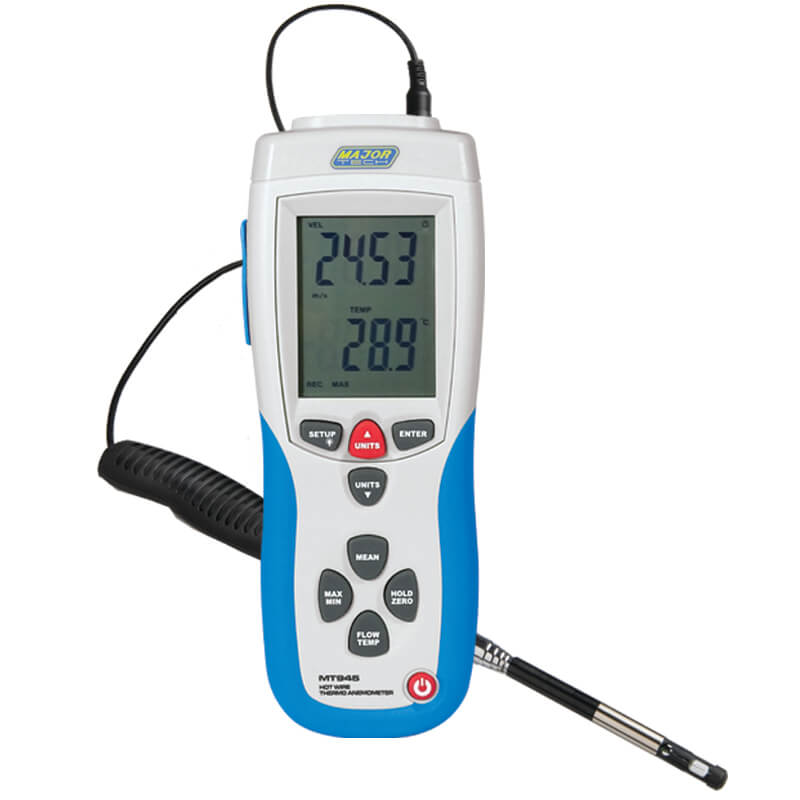Exploring the Functions and Benefits of Anemometers for Weather Condition Fanatics and Specialists
From cup anemometers to sonic anemometers, each kind brings its one-of-a-kind collection of advantages and applications, shedding light on numerous elements of atmospheric problems. As we dive into the functions and advantages of anemometers, a much deeper understanding emerges not only of prevailing climate phenomena however likewise of the wider implications for markets like wind energy manufacturing and environmental study.
Significance of Anemometers in Weather Tracking
Anemometers play a vital role in climate surveillance by supplying exact measurements of wind rate, helping in forecasting and understanding climate patterns. These instruments, varying from traditional mug anemometers to modern ultrasonic anemometers, are important for meteorologists, scientists, and weather fanatics alike.

Kinds Of Anemometers and Their Applications
The most typical types of anemometers consist of cup anemometers, vane anemometers, hot-wire anemometers, and ultrasonic anemometers. Mug anemometers consist of three or 4 cups placed on horizontal arms that revolve with the wind, determining its rate. Vane anemometers, on the other hand, make use of an easily revolving vane to line up with the wind instructions, offering both wind rate and direction measurements.
Each kind of anemometer has its unique benefits and applications. Cup anemometers are durable and suitable for general climate monitoring, while vane anemometers are preferred for directional measurements. Hot-wire anemometers are delicate to low air speeds, making them ideal for indoor settings. Ultrasonic anemometers are non-intrusive and offer high accuracy, commonly made use of in research and specialized weather condition surveillance applications. Comprehending the features and applications of each sort of anemometer is critical for choosing one of the most ideal tool for certain weather monitoring requirements.
Advantages of Utilizing Anemometers in Forecasting
In meteorology, the usage of anemometers provides very useful benefits for boosting the precision of weather condition forecasting. Anemometers measure wind rate and instructions, supplying critical information for anticipating weather patterns. By incorporating wind information right into forecasting models, meteorologists can better recognize the activity of weather condition systems, expect changes in atmospheric problems, and problem a lot more accurate forecasts.
In addition, anemometers play a crucial function in analyzing prospective climate dangers. Keeping an eye on wind speeds aids forecasters anticipate extreme climate events such as typhoons, tornadoes, and winter months storms with greater precision. This early caution system enables authorities to issue prompt notifies and apply needed precaution, decreasing the threats to life and residential or commercial property.
Additionally, anemometers help in optimizing sustainable energy production. By assessing wind patterns, meteorologists can determine ideal locations for wind ranches and predict energy result, contributing to the effective generation of wind power.

Anemometers in Wind Energy Manufacturing
Given the vital duty anemometers play in giving accurate wind data for weather condition projecting and threat assessment, their importance includes the world of wind power manufacturing. Anemometers are essential instruments in the field of wind power, where the dimension of wind speed and direction is important for establishing the usefulness and efficiency of wind turbine setups. By properly measuring wind rates at differing heights, anemometers aid maximize the placement and style of wind turbines to maximize energy outcome.
In wind ranches, anemometers are purposefully positioned to accumulate real-time wind information that is made use of to examine the prospective power production of a site. This data is important in identifying the economic viability of wind energy tasks and in projecting energy generation to guarantee grid stability. Additionally, anemometers help in checking wind problems to maximize wind turbine performance, prevent damages from high winds, and make sure the security of personnel operating in the location of wind generators.
Enhancing Weather Condition Understanding With Anemometers

Anemometers play an essential role in enhancing our understanding of microclimates. These localized climate condition can differ significantly from more comprehensive local projections, making it necessary to have precise data for specific locations. anemometer. By purposefully positioning anemometers in different locations, researchers can collect in-depth info on how wind acts in various terrains, urban settings, or bodies of water
Additionally, anemometers contribute to improving climate projecting models by providing real-time information on wind habits. This information is specifically beneficial for anticipating severe climate events, optimizing farming methods, and supporting industries like aeronautics and maritime navigation. Overall, anemometers are invaluable tools that enable us to dive deeper into the intricacies of weather condition systems, ultimately leading to even more better-informed choices and precise forecasts.
Final Thought
In conclusion, anemometers play click here to find out more a vital duty in weather tracking and projecting by gauging wind rate and instructions. Anemometers also have applications in wind energy production, additional highlighting their relevance in both weather forecasting and eco-friendly power sectors.
From cup anemometers to sonic anemometers, each type brings its special collection of applications and benefits, losing light on various aspects of atmospheric conditions. These instruments, ranging from conventional cup anemometers to modern ultrasonic anemometers, are essential for meteorologists, researchers, and weather enthusiasts alike. The most common types of anemometers include mug anemometers, vane anemometers, hot-wire anemometers, and ultrasonic anemometers. Mug anemometers are durable and ideal for basic weather condition tracking, while vane anemometers are favored for directional measurements. Anemometers are important instruments in the field of wind power, where the dimension of wind rate and instructions is important for article establishing the usefulness and effectiveness of wind turbine installations.
Comments on “Top Attributes to Look for in an Efficient Anemometer for Accurate Wind Measurement”